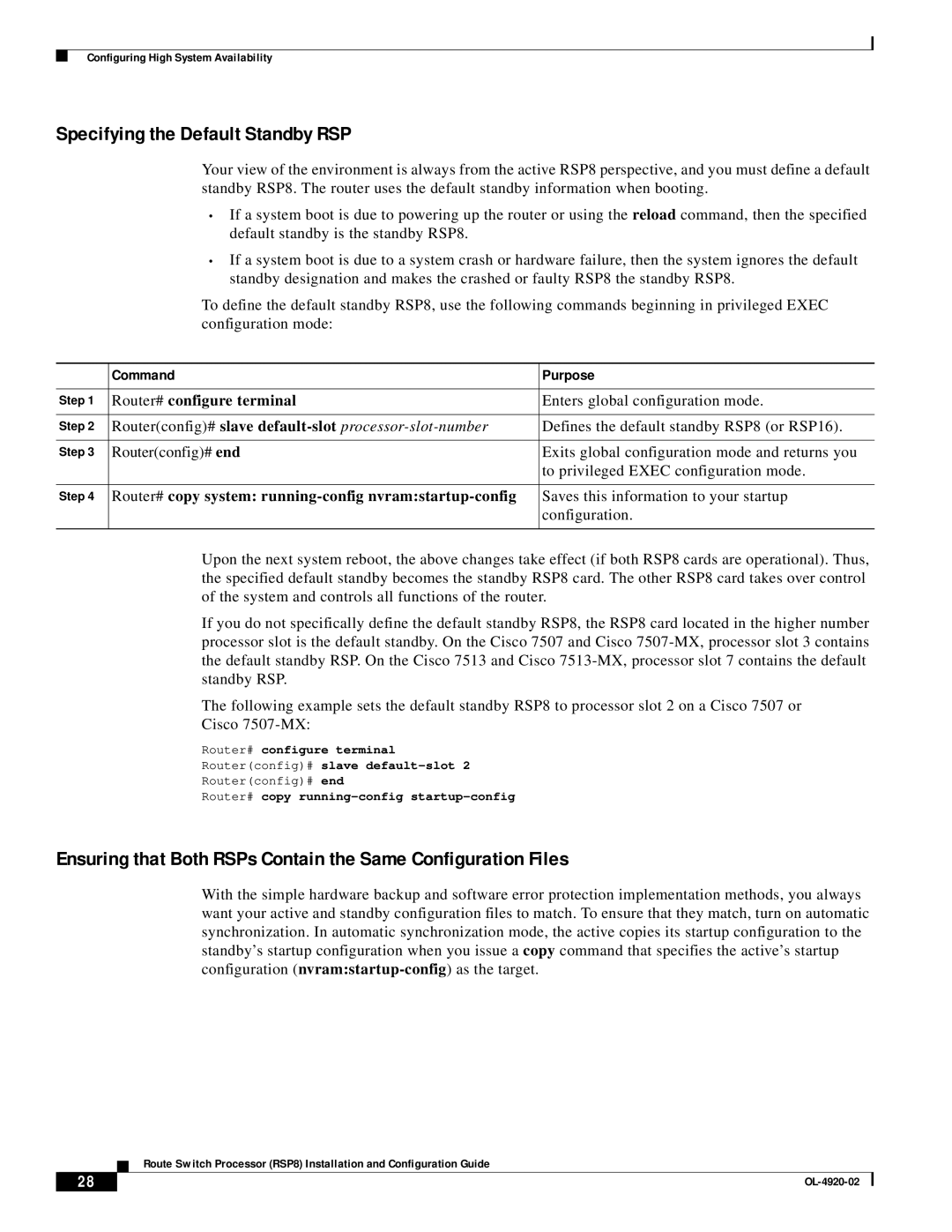
Configuring High System Availability
Specifying the Default Standby RSP
Your view of the environment is always from the active RSP8 perspective, and you must define a default standby RSP8. The router uses the default standby information when booting.
•If a system boot is due to powering up the router or using the reload command, then the specified default standby is the standby RSP8.
•If a system boot is due to a system crash or hardware failure, then the system ignores the default standby designation and makes the crashed or faulty RSP8 the standby RSP8.
To define the default standby RSP8, use the following commands beginning in privileged EXEC configuration mode:
| Command | Purpose |
|
|
|
Step 1 | Router# configure terminal | Enters global configuration mode. |
|
|
|
Step 2 | Router(config)# slave | Defines the default standby RSP8 (or RSP16). |
|
|
|
Step 3 | Router(config)# end | Exits global configuration mode and returns you |
|
| to privileged EXEC configuration mode. |
|
|
|
Step 4 | Router# copy system: | Saves this information to your startup |
|
| configuration. |
|
|
|
Upon the next system reboot, the above changes take effect (if both RSP8 cards are operational). Thus, the specified default standby becomes the standby RSP8 card. The other RSP8 card takes over control of the system and controls all functions of the router.
If you do not specifically define the default standby RSP8, the RSP8 card located in the higher number processor slot is the default standby. On the Cisco 7507 and Cisco
The following example sets the default standby RSP8 to processor slot 2 on a Cisco 7507 or
Cisco
Router# configure terminal
Router(config)# slave
Router(config)# end
Router# copy
Ensuring that Both RSPs Contain the Same Configuration Files
With the simple hardware backup and software error protection implementation methods, you always want your active and standby configuration files to match. To ensure that they match, turn on automatic synchronization. In automatic synchronization mode, the active copies its startup configuration to the standby’s startup configuration when you issue a copy command that specifies the active’s startup configuration
Route Switch Processor (RSP8) Installation and Configuration Guide
28 |
| |
|
